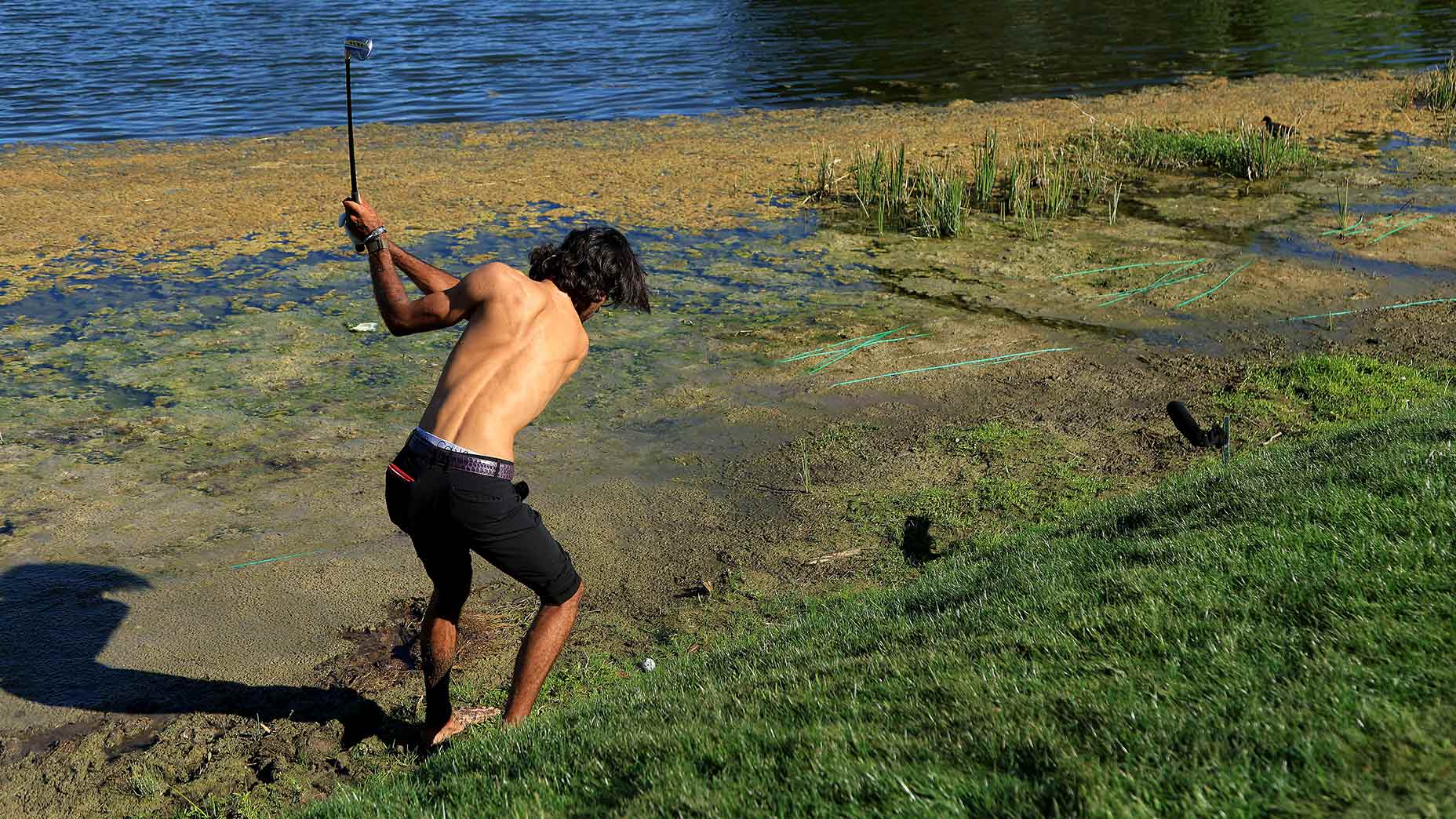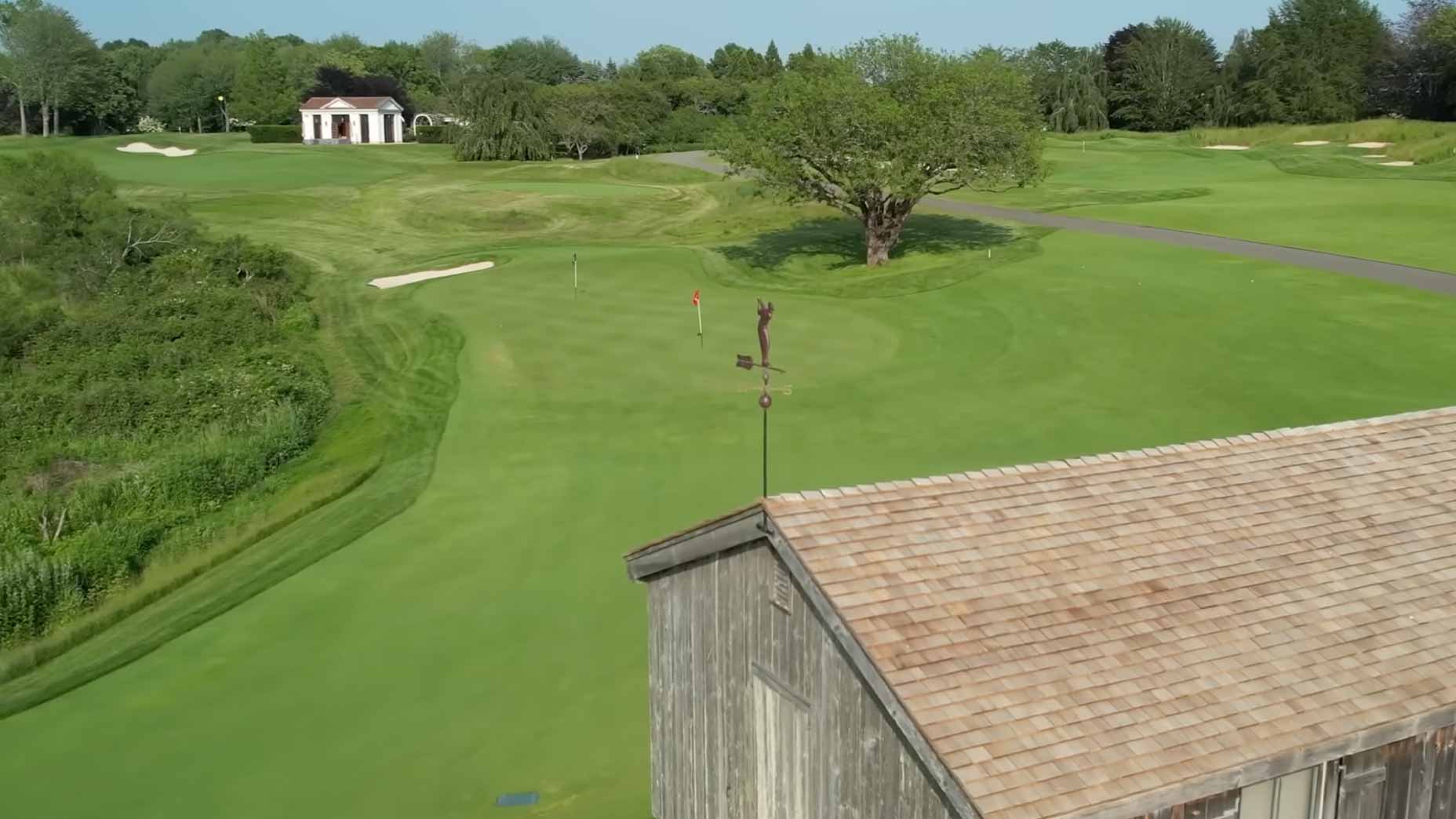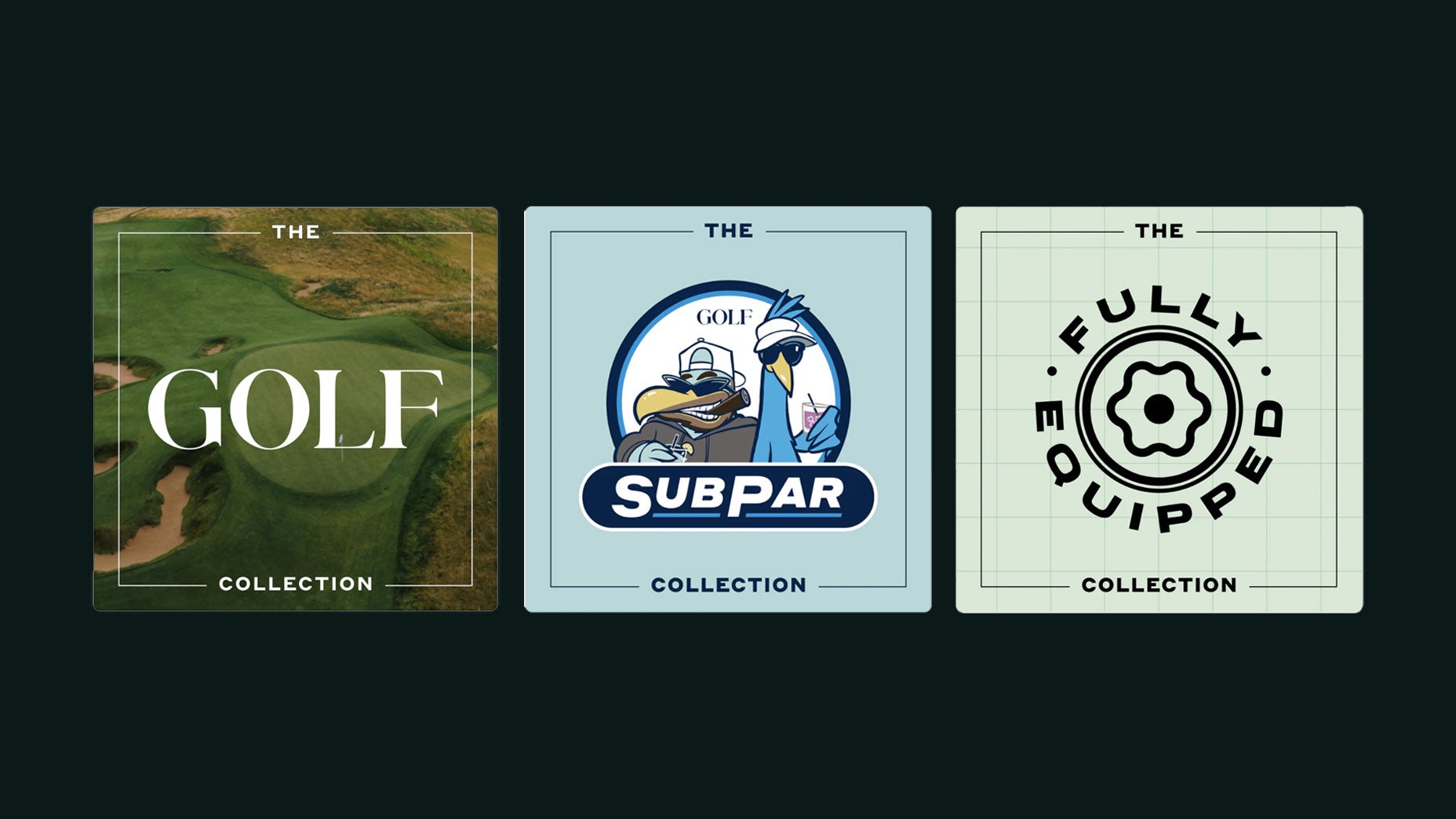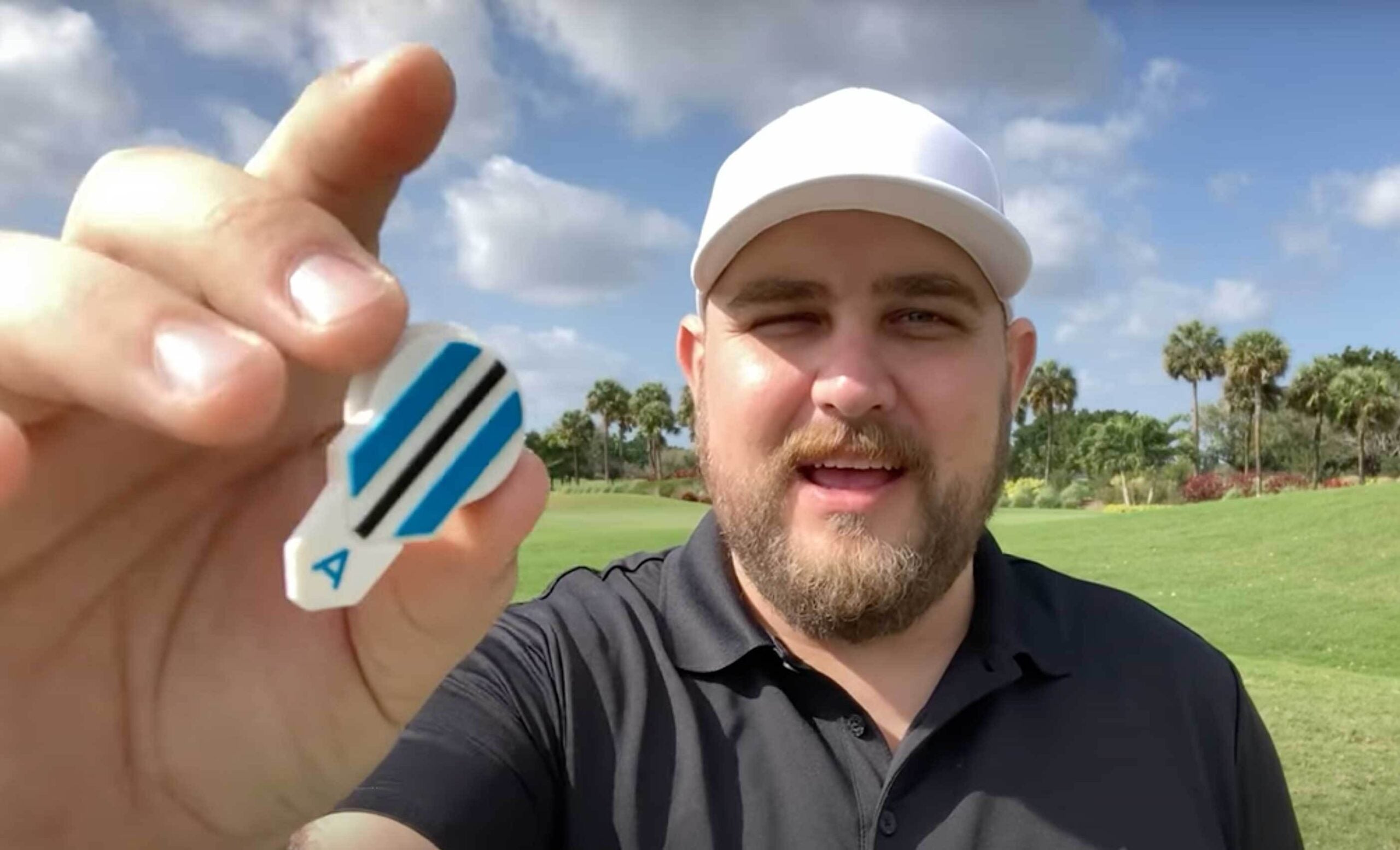Having played more golf than normal over the last month in Wyoming and Montana, my son Matthew and I certainly had our fair share of bad lies or locations we found ourselves in.
And while not all bad lies are created equally, there are certainly some techniques and course-management tips that you can use to avoid making large scores on individual holes. Here are a few situations — and how to adjust and survive.
10 ways to escape bad lies on the golf course
1. Ball buried in the rough
This is the most common difficult lie you’ll see on the golf course and emphasizes the premium of hitting the fairway (and how much easier it can make your round).
When the ball is in the rough and sitting down so that only part of the ball is visible, this can make solid contact much more difficult. If you know how to adjust your setup so you can make more direct contact with the back of the ball — compared to a regular setup and swing that may cause too much grass contact in-between the club face and the ball — you can maximize your ability to advance the ball closer to your target.
Proper ball position for the buried lie would be center to slightly back relative to center.
Lean your upper body toward the target and put more weight on your forward foot. When you do this allow your lead shoulder to drop so it’s closer to the ground.
This steeper shoulder angle and angle of attack will allow the clubhead to come in more steeply, making more direct ball contact rather than being twisted or caught by the grass.
When you tilt forward your chosen club will become less lofted, so you may need to offset this by choosing one with more loft to be able to get enough launch to get out of the deep grass.
2. High greenside bunker lip
Not all high bunker lips are created equal but they sure do seem to cause chaos. The first thing to consider is how high the lip is. Most sand wedges are built with enough loft to clear a regular lip without needing to make any adjustment other than to be sure to take enough sand with a square to slightly open face.
Higher clubhead speed golfers can open the face slightly, but lower clubhead speed golfers may need to keep the face more square to be able to hit the ball far enough to escape the needed distance to get to the green. Many golfers are tricked into opening the face when the lip is high, only to open it to the point that the ball cannot go far enough to get to the green.
Consider that your chosen wedge, even a 56, in most cases has enough loft to clear the lip, just as long as you take sand and make a proper motion where you are on your forward side when you finish and avoid the inclination to fall back and try to incorrectly lift the ball.
3. Blind shot
Blind shots can be fun and a little intimidating too. Once you walk to a location where you can identify your target, try to determine an intermediate spot that you will want your ball to go over to get to your target.
When you walk back to your ball, carefully keep your eye on this intermediate target and use it to help you to aim correctly when you get back to your golf ball.
4. Long water carry
When you have a long water carry, it’s important you truly understand how long each club, when hit properly, stays in the air. Lofted clubs in the middle of the bag may be your best choice, rather than clubs that travel the farthest.
A 7-wood or 5-hybrid may be good choices when you need to maximize carry over water or any hazard, but you should also consider if there is a true gain when trying to clear a hazard. If you succeed, are you able to get to the green one shot sooner? Or is it giving you a much shorter approach distance?
5. Ball in divot
It happens to all of us. You hit a nice shot that lands right in the middle of the fairway and into a divot. While it isn’t fun, having a good attitude and a plan can help you easily escape this situation.
Similar to a ball buried in the rough, it will be difficult to get to the back of the ball cleanly without the proper adjustment.
To make good contact, you want to lean your upper body forward toward the target and drop your lead shoulder so that the club path will get steeper and help you to hit the ball first before the turf.
Your ball flight will come out lower, so you may want to take a bit more loft, but at the least plan for lower and more roll.
When you collide the club with the ground, due to the fact that it is coming in more steeply, the contact will likely dig, but this is necessary to get the ball out of the divot.
You do not need a traditional finish as your weight should stay forward throughout the swing, but when the club hits the ground and correctly digs this may naturally limit your finish.
6. Tree limbs limiting swing size
When tree limbs limit your backswing, you first want to get the ball out and back in play, but in some cases you may want to not only get out but maximize distance to get closer to your target. Choose a lower-lofted club like a hybrid or mid-iron and position your ball slightly back in your stance to hit the ball lower and farther. Keep your weight and upper body forward throughout the swing. You want to carefully test how much backswing you have and try to avoid slamming into the limbs, where you could possibly take a part of the branch down and be penalized.
10 ways to maximize your practice roundsBy: Kellie Stenzel, Top 100 Teacher
Once you have a feeling for your backswing length, take a few practice swings and try to hit the ground with as much speed as you can and still maintain balance. This accelerated swing will help you escape the trees and advance well down the hole.
7. Low tree limbs
Trees can certainly create limitations to get to your target. Lower branches require a punch-type motion with a less-lofted club. Choose a lower-lofted club and play your ball position well back in your stance. Keep your weight forward throughout the swing and lead the hand and club release with both arms moving forward so that the club shaft leans more forward at impact producing a lower, driving ball flight.
8. Fried egg in bunker
A fried egg looks worse than it is. When the ball is buried in the bunker, you need to engage the digging edge of your wedge rather than the bounce, and to do this focus on your setup.
You still want to position your ball forward of center if you are in a greenside bunker or needing to hit the ball shorter, but what should be different is you want to lean your upper body forward and lean the shaft as well so that the leading edge will dig. If you do not use the leading edge, the bounce will not allow the club to get deep enough to get below the bottom of the ball. When you lean the shaft, the club will become less lofted, so you need to plan for a lower flight that will likely roll more. You may want to use your most lofted wedge to offset this.
9. Greenside bunker — no sand
When you dig your feet into a bunker and realize there isn’t any sand, you need to adjust so that the club does not bounce off the hard-packed sand and skull across the green.
Much like the fried egg, you want to use the leading edge by leaning your upper body and club shaft forward toward the target. This steeper angle and digging edge will help the club dig into the sand before the ball and keep the club from bouncing off the sand.

10. In the water in a hazard
If your golf ball is in the water in the hazard but not fully submerged, you can hit it out, but is it worth it? You likely need to take off your shoes and socks and maybe even other pieces of clothing. (This might also be a good time for your rain suit.)
I think if more than half the ball is above the water line, you can get the ball out. Take a shorter and more lofted club to keep things simple. Precision is the key here, with a relatively centered ball position and the weight favoring the forward foot throughout. Take a slightly smaller backswing and hit straight down and into the water. Keep the moving parts simple and just keep your weight forward throughout the swing. But be prepared to get wet and dirty to avoid a penalty shot.
There are so many different situations and bad lies that can come up on the course. When deciding whether to give it a go, consider if you are gaining more than you might by just taking an unplayable lie and one-shot penalty.
It is a learned skill to be able to escape bad lies — and also to know when to take your medicine and just play safe and back into play.











